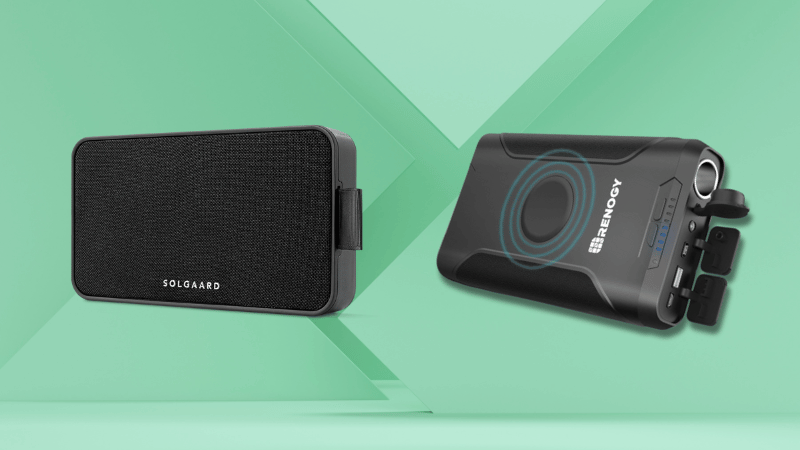A solar power bank might be the smartest switch you can make this year. Whether you’re camping in the wild, prepping for emergencies, or just tired of draining wall sockets, these portable solar chargers offer freedom — and a lighter footprint on the planet.
But here’s the catch: not all solar power banks are created equal. Some are built to last and designed with eco-friendly practices. Others? Not so much.
In this guide, we’re flipping the script on product reviews. Instead of comparing one-off models, we’re spotlighting the brands behind them — their ethics, sustainability practices, and how they’re helping consumers charge smarter and greener.
You’ll also learn how to choose the best solar power bank for your lifestyle, what devices they support, and why they’re a great fit for travelers, adventurers, and anyone looking to live a little more off-grid.
3 Solar Power Bank Brands You Can Rely on
1. Renogy

Renogy has carved a name for itself in the renewable energy space, offering solar solutions that range from off-grid systems to sleek solar power banks. At its core, the brand is rooted in empowering energy independence through clean technology — and it shows. Their solar power banks, like the 72,000mAh model, pack serious functionality into a compact, user-friendly design that supports off-grid living and emergency preparedness.
What sets Renogy apart is its full-circle sustainability mindset. The company emphasizes responsible sourcing, high-efficiency solar cell integration, and product longevity — a trio that reduces reliance on disposable batteries and lowers overall e-waste. Renogy’s packaging also reflects its commitment to minimalism and recyclability, reinforcing its dedication to eco-conscious manufacturing.
Beyond product specs, Renogy walks the walk when it comes to ethics. The brand is transparent about its manufacturing standards and routinely invests in R&D to create solutions that meet global sustainability goals. With certifications like RoHS and CE, Renogy’s devices are built to comply with environmental safety regulations from the ground up.
For anyone looking to reduce their carbon footprint while staying powered up, Renogy’s solar power banks are a solid investment. The brand’s tech-forward yet eco-aware approach makes them a standout for conscious consumers who value sustainability and smart energy use.
2. BLAVOR
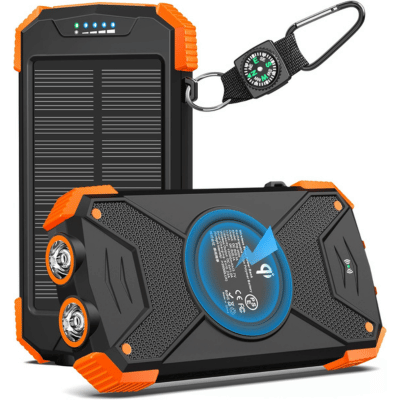
BLAVOR may not be a household name like some solar giants, but it’s quickly gaining traction among eco-conscious adventurers looking for reliable, affordable solar charging. Best known for its portable solar power banks with wireless charging and rugged builds, the brand aims to make off-grid energy more accessible — especially for everyday users and outdoor lovers.
While BLAVOR doesn’t lean heavily into sustainability branding, its core product line naturally supports greener living. These solar banks extend the life of mobile devices without constant wall charging, encouraging more energy independence. The emphasis on multi-functionality — with built-in flashlights, wireless charging, and water resistance — adds to their long-term usefulness, reducing the need for single-purpose gadgets.
From a manufacturing standpoint, BLAVOR focuses on affordability and durability. Though details on sourcing and supply chain transparency are limited, the brand’s design choices — like using reinforced outer shells and high-efficiency panels — help minimize early device failure and electronic waste. Their compact packaging also reflects a minimalist, no-frills ethos that skips excessive plastics.
BLAVOR’s solar power banks are a strong fit for users who want to make greener tech swaps without breaking the bank. They may not carry a big sustainability banner, but the practicality and reusability of their products make them a smart step toward lower-impact living.
3. MREGB
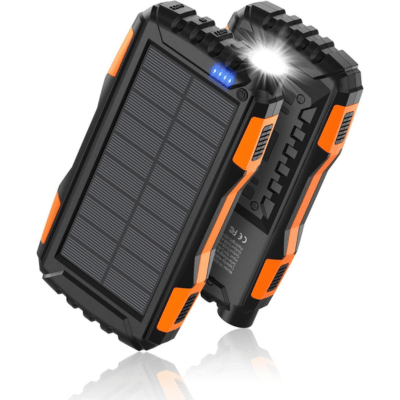
MREGB is part of a growing wave of lesser-known tech brands offering functional solar power banks for eco-curious consumers. While the brand doesn’t market itself with bold sustainability claims, its solar-powered products contribute to greener lifestyles by promoting off-grid charging and emergency readiness.
MREGB’s solar banks often feature multi-panel foldable designs, allowing users to harness more sunlight and reduce dependency on the grid. That’s a small but meaningful step toward energy resilience — especially for campers, travelers, and folks prepping for outages. Their designs typically combine USB-C compatibility, LED lighting, and waterproof casing, which adds value and extends each product’s lifespan.
On the manufacturing side, transparency is limited. The brand doesn’t publish detailed sourcing or corporate responsibility reports, which leaves room for growth in ethical production and environmental accountability. However, their solar tech encourages reusability and reduces the need for disposable battery packs — a win for those looking to reduce their e-waste.
MREGB is a viable entry point for budget-conscious buyers looking to dip their toes into solar tech. While not a front-runner in sustainability practices, the brand’s power banks offer everyday utility and help nudge consumers toward cleaner, more self-sufficient energy habits.
How to Choose the Best Solar Power Bank
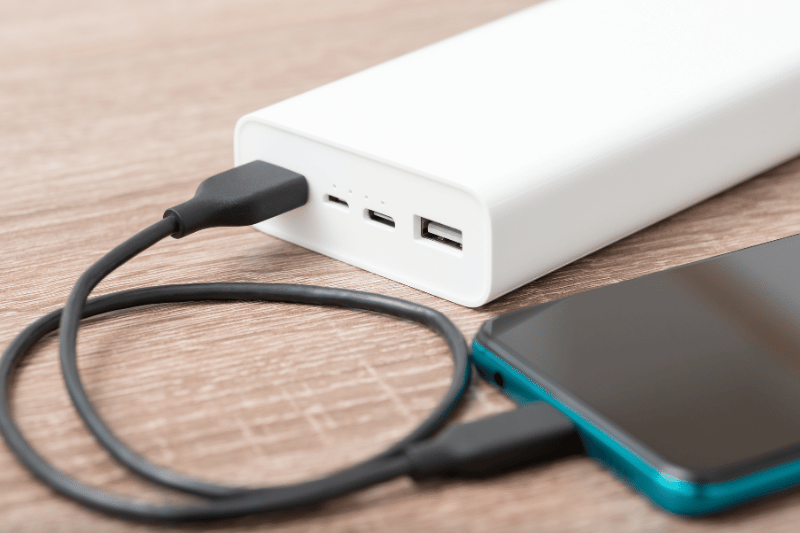
Battery Capacity: How Much Power Do You Need?
Ever wonder how much power you really need to keep your gadgets going? The heart of a solar power bank is its battery, and its capacity is a big deal. Measured in milliampere-hours (mAh), the rule is simple: the higher the mAh, the more charging power you have at your fingertips.
Most top-notch solar power banks pack a punch with capacities ranging from 10,000 mAh to 25,000 mAh. But for those who need even more power, there are beasts out there boasting up to 50,000 mAh.
Consider your smartphone – most have batteries around 4,000 mAh. A 10,000 mAh solar power bank can recharge it from dead to full 2 to 3 times over, even after you factor in some power loss during the process.
Got a gadget with a monster battery, like the latest iPhone, or need to keep a tablet juiced up? Aim for the heavy hitters with at least 25,000 mAh. This way, you’re covered for multiple charges, ensuring your devices stay powered up, whether you’re on a weekend getaway or a longer adventure.
How Many Times Can It Charge Your Device?
Let’s get real about what to expect from solar power banks. While they’re super handy, the solar panels might not always give you rapid charging. So, it’s smart to think about how many charges you’ll actually get.
If your phone’s battery is in the ballpark of 4,000 to 5,000 mAh, here’s a quick way to figure out how much charge you can expect. Take the capacity of your power bank and divide it by your phone’s battery size. For instance, with a 25,000 mAh power bank and a 4,000 mAh phone battery, you’d theoretically get about 6.25 charges.
But, here’s the kicker: not all that power makes it through to your device. A bit gets lost along the way. If we play it safe and assume about 65% efficiency, those 6.25 charges drop down to about 4 full charges.
So, when planning for a trip or just everyday use, keep these numbers in mind. It’ll help you stay powered up without overestimating what your solar power bank can do.
Charging Time with Solar Energy: What to Expect
Charging up a solar power bank using just sunlight? Brace yourself for a bit of a wait. Even the top-tier models need a hefty dose of direct sunlight—think around 100 hours—to get fully charged. Yep, that’s right, it could take several weeks to soak up enough sun.
But here’s the silver lining: you don’t always need a full charge to get your gadgets going. Often, just a single sunny day can give your power bank enough juice to charge your phone or tablet once or twice. So, if you’re out camping or hiking and the sun’s on your side, you’re in luck.
For those who’d rather not depend too much on traditional power sources, picking a solar power bank with extra solar panels is a smart move. These designs catch more sunlight, speeding up the charging process and making the most out of every ray.
Remember, a bit of patience goes a long way when you’re harnessing the power of the sun. And on those bright days, you’ll appreciate the eco-friendly boost to your devices.
Thinking About Portability
When it comes to choosing a solar power bank, size and weight really matter. Are you the type to pack everything but the kitchen sink for a camping trip, with plenty of space to spare? If so, you might lean towards a larger power bank. These beefier units come with more solar panels and a bigger battery capacity, perfect for keeping all your gadgets charged.
However, if you’re more of a minimalist traveler or you’re already packing heavy, space and weight become precious commodities. In these cases, a compact, lighter power bank might be your best bet. Sure, it might not hold as much power, but it’ll save you the strain of carrying an extra load.
From personal experience, there’s nothing like a long, uninterrupted nature walk. That’s why, for me, a smaller power bank is a must-have. It slips easily into my pocket, ready to give my phone a boost without weighing me down. This way, I can enjoy the great outdoors without worrying about running out of battery.
How Many Devices Can You Charge at Once?
When picking out a solar power bank, think about how many gadgets you’ll need to charge simultaneously. Will one USB port do the trick, or do you need a couple more?
Take camping trips as an example. If you’re heading out with a buddy, you’ll likely both need to recharge your phones at the end of the day. In that case, a power bank with at least two USB ports is essential.
But what if you’re carrying more tech with you? Maybe you have a couple of phones plus a Nintendo Switch that needs charging. That’s when you’ll want to look for a power bank armed with several USB ports to keep everything powered up.
These days, it’s pretty common to find solar power banks with two USB slots, but options vary widely, so it’s always a good idea to double-check.
Also, remember that not all USB ports are created equal. Some might offer fast charging, getting your device powered up quickly, while others might take a bit longer to do the same job. This little detail can make a big difference, especially when you’re trying to get all your devices charged and ready to go.
Why Durability Matters for Solar Power Banks
I’m clumsy. Like, really clumsy.
My gadgets tend to take a bit of a beating, which is why I always go for the ones that can really take a hit. When it comes to solar power banks, durability isn’t just a nice-to-have, it’s a must.
Think about it: these power banks are going to be your lifeline when you’re out in the wild, dealing with everything from mud baths to accidental drops. They need to withstand being chucked into your bag, dropped on rocky trails, and maybe even surviving a tumble or two.
Especially for someone like me, who’s known to be a bit clumsy, choosing a solar power bank that can stand up to a bit of rough and tumble is crucial. It’s not just about surviving the occasional oops moment; it’s about ensuring you’re never left without power when you’re far from a plug socket. So, if you’re known for being a little heavy-handed with your tech, make sure your solar power bank is tough enough to keep up.
Understanding Weatherproofing
Talking about weatherproofing might not be the most exciting topic, but trust me, it’s worth paying attention to, especially when it comes to your solar power bank. If you’re like me and not planning to babysit your charger under the sun all day, you’ll want it to handle whatever the weather throws at it—be it a sudden downpour, a dust storm, or scorching heat.
You’ll often come across terms like “IP67” and “IP68.” These are just fancy ways of saying how good a device is at keeping water and dust out. In simple terms, the higher the numbers, the better the protection.
The real champs in the solar power bank game can take a beating from the elements and keep on charging. So, when you’re picking one out, make sure it’s got the toughness to back you up, no matter where your adventures take you.
After all, what’s the use of a solar charger if it taps out at the first sign of rain?
Cool Extras to Look for in Solar Power Banks
When you’re picking out a solar power bank, there’s more to consider than just how much charge it can hold. Some of the best features to keep an eye out for can make your life a lot easier.
First up, built-in LED flashlights. These are super handy and don’t drain much power, making them perfect for those unexpected moments, like when you’re trying to find your way back to your tent in the dark or dealing with a power cut at home.
Then there’s Qi charging, a wireless charging standard that’s a game-changer if you have a newer smartphone. Pair that with fast charging capabilities, and you can power up your devices in no time.
Don’t forget about indicator lights. These little guys are crucial for giving you a heads-up on how much charge you’ve got left, so you’re not caught off-guard.
And for the clumsy among us (myself included), a non-slip casing is a lifesaver. It keeps your power bank secure, whether it’s perched on a boulder or sitting on the edge of your camping table.
So, when you’re shopping for your next solar power bank, remember these extra features. They might just turn a good power bank into a great one.
Solar Power Banks vs Solar Chargers
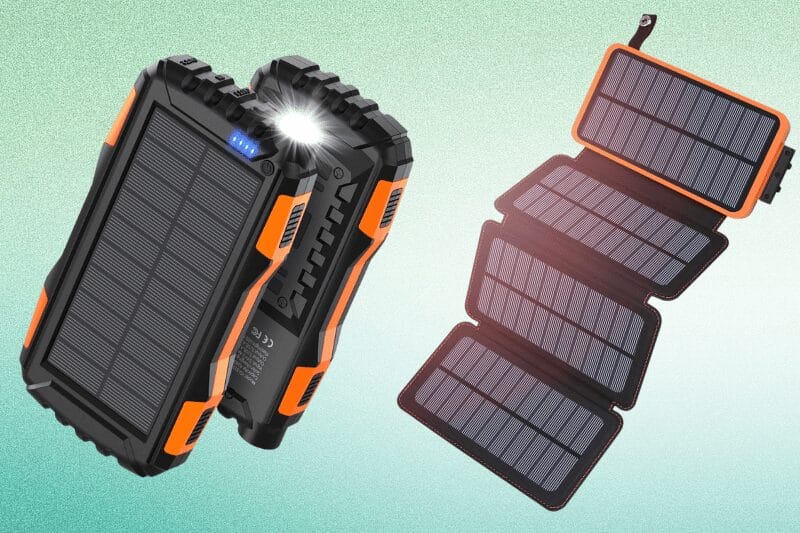
Ever been on a hike, capturing the beauty of nature with your smartphone, only to find your battery dead? Or picture this: you’re camping under the stars, and your only connection to the outside world, your phone, needs a power boost.
This is where the dilemma between choosing a solar power bank and a solar charger comes into play. But which one suits your adventure?
Solar Power Bank
A solar power bank is essentially a portable battery with a built-in solar panel, often around 5W or less. It’s designed to store energy, letting you charge your devices anytime. Imagine you’re at a music festival, capturing moments on your phone.
A solar power bank ensures you can recharge even when you’re in the middle of a crowd, away from power outlets.
They’re perfect for those “just in case” moments, offering peace of mind on short trips. But remember, relying solely on solar to charge it can be slow. It’s like waiting for a pot to boil — it’ll happen, but it’ll take some time. Most users charge theirs at home, using solar as a convenient top-up option.
Solar Charger
On the other hand, a solar charger is a larger, more efficient panel that directly powers your devices using the sun’s energy.
There’s no storage; it’s all about live charging.
Perfect for longer, off-grid adventures where power outlets are just a distant memory. With panels ranging from 5-25W, these chargers are like having a mini power station, ideal for keeping everything from smartphones to cameras charged during extended camping trips or in an off-grid cabin.
Which Option Should You Choose?
Imagine setting up a solar charger on a sunny rock by your tent, directly fueling your tablet with solar energy, versus having a solar power bank getting a slow but steady charge at your campsite to use later in the evening.
Both devices offer a green alternative to traditional charging, reducing your carbon footprint and dependency on non-renewable energy sources. It’s a small step towards a more sustainable lifestyle, one charge at a time.
Many adventurers share stories of solar power banks saving their phones during unexpected outages, while others swear by the reliability of solar chargers to keep their cameras and GPS devices powered on multi-day treks.
Consider your typical adventure: Is it a day trip where a solar power bank’s portability and convenience shine? Or are you venturing off-grid, where the direct, powerful charge of a solar charger is essential?
Think about device compatibility, weight preferences, and, of course, budget.
As technology evolves, so do these devices. Keep an eye out for new features like faster charging solar power banks or more compact, efficient solar chargers. Your perfect match today might have an even better version tomorrow.
Whether you opt for a solar power bank or a solar charger, you’re choosing a smarter, eco-friendlier way to stay powered up. Each has its place, depending on your adventure’s length, your gadgets’ needs, and your personal preferences.
So next time you pack, consider not just what you’ll take but how you’ll power it. Happy charging!
Who Would Benefit From A Portable Solar Power Bank?
Campers

If you’re on a short-term camping trip, then a portable solar power bank could be the perfect way to charge two devices or more at the same tent when you’re sleeping or just having some downtime.
This is especially true if you’re not going to have access to the grid where you’re camping.
If you’re going with a solar power bank rather than a portable solar charger, I would recommend fully charging the power bank at home with a wall outlet first and then using the built-in solar panel to help keep the battery topped up on your trip.
For longer camping trips, look for high-capacity batteries (20,000 mAh or more) and the best solar power banks with multiple fold-out solar panels.
Also consider the climate you’re visiting and how waterproof/durable you may need the unit to be.
Preppers
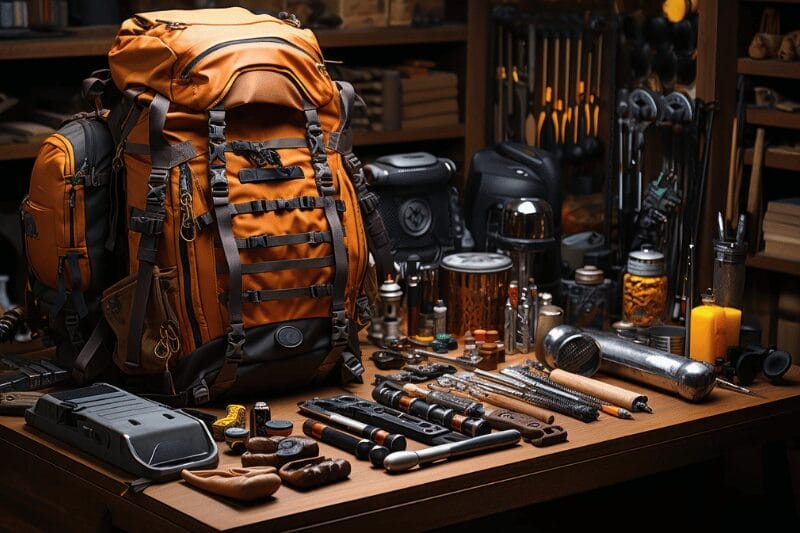
If you’re preparing for a natural disaster, loss of power, or full-blown zombie apocalypse, then a solar power bank could be a good investment for you.
If you charge up the bank via grid power (before the end of the world) and then keep it in sunlight throughout the day, you should get several days of juice to charge your devices.
Plus, if you get enough sunlight, you can help to keep it topped up.
If you’re planning to be without electricity for several days or weeks, I would recommend getting a portable solar charger as well.
In the event of an emergency or natural disaster, you might not have access to wall power for charging your devices or your power bank. In this case, a solar power bank gives you a way to keep your phone charged, so you can stay in touch with relatives or for contacting emergency services.
— Radu, PowerBankExpert Writer
People Who Live Off-The-Grid

If you live off-the-grid, you may benefit from one of the best solar power banks with a high battery capacity and multiple fold-out solar panel sections.
While it’s not as effective as having a full-on solar panel kit for your home, a solar power bank could be a great little device for keeping your small devices charged up.
Ideally, you could pair a high-performing power bank with a high-quality solar charger or solar panel kit.
That way, you can have power at your home and then take a portable battery with you when travelling in nature, keeping the device’s solar panel in the sunlight to help keep the charge up.
Eco-conscious Travelers

While it’s recommended that you charge most solar power banks via a wall outlet before taking them out, the best solar power banks come with multiple solar panels that are better at charging from the sun’s rays alone.
Not all solar power banks are born equal.
If you’re looking to reduce your carbon footprint as much as possible but your phone still needs to be fully charged, I recommend you find a high-quality device with a high battery capacity (25,000 mAh or more is great) and multiple panels.
This way, you can keep one or two devices charged up without relying on the grid, which often uses fossil fuels for its power.
You may have to use wall outlets occasionally, but you’ll definitely reduce your dependency on fossil fuels… and that’s the goal!
Forgetful Folks

You know what I’m really good at? Forgetting chargers. I do it all the time, and it’s really annoying. I need my phone for my job, GPS, and a bunch of other stuff.
Like most people in the 21st century… no phone is not an option.
Now, I don’t believe in “forcing myself to remember my phone charger,” because that just won’t work for me. I believe in building backup systems and contingencies.
As a result, I keep a small power bank in my car and a small power bank in my office. This way, I always have backup power when my charger is nowhere to be seen.
When I don’t need these battery packs because I’ve remembered my charging cables, I can just leave them in direct sunlight on my dashboard or office window sill. Whenever I need them, they’re always charged up and ready to go. Convenient.
What Devices Can You Charge With A Solar Power Bank?
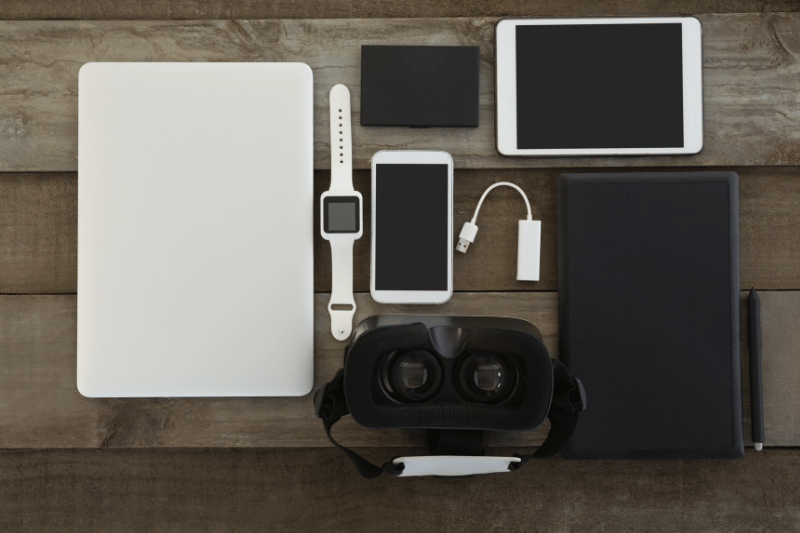
In most cases, a solar power bank can charge smaller electronic devices no bigger than a tablet. They usually have one or two USBs for their outputs, so you’re usually looking at charging smaller devices that use USB charging. This includes:
- Smartphones
- Tablets
- Small laptops
- iPhones
- iPads
- Bluetooth speakers
- Portable radios
- GPS systems
- GoPro cameras
Some newer electronic devices will use USB-C, USB 3.0, or micro-USB charging systems. Modern smartphones might also use wireless Qi charging systems.
If you’ve got devices that need a unique charger connection, be sure to check this ahead of time.
Which Mobile Phones Are Compatible With A Solar Power Bank?
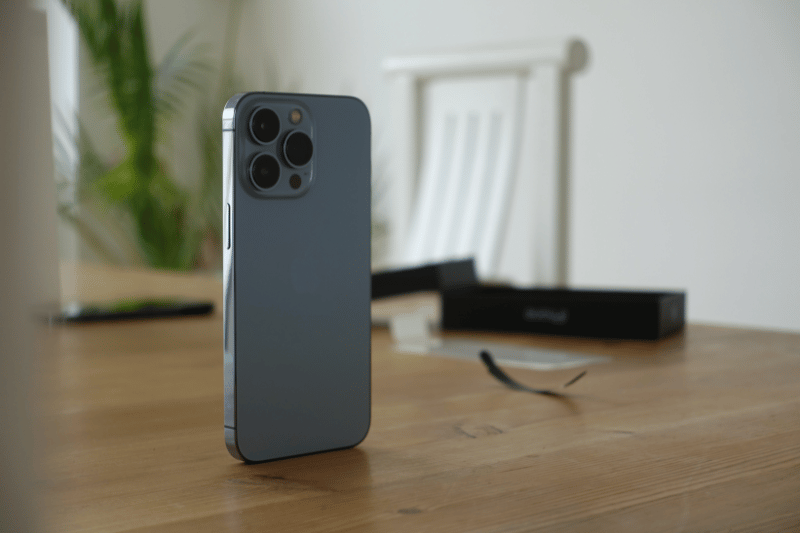
The vast majority of phones these days charge via USB, so as long as you have the correct charger cable, you should be able to fully charge basically any modern smartphone with your power bank’s solar phone charging capabilities.
If your phone has wireless Qi charging, be sure to look for a power bank that supports this feature — you’ll probably end up paying quite a bit for a device that can support this.
You can fully charge any of these phones with a solar power bank and the right charger cable. The essential part is taking the correct charger cable OR buying a compatible power bank if your phone uses Qi charging.
A word of advice, however — you might not want to fully charge the phone up to 100%.
Make sure to only charge your phone from power bank to up to 85%. Because according to Lapguard your phone starts to discharge when it has full charging which means you will be wasting the power of your solar charger by charging your phone to 100%
— Phone-Tree, Smartphone Specialists
Frequently Asked Questions (FAQ)
Solar power banks last for various times according to their battery capacity. With a 10,000 mAh device, you’ll get 5 charges from an average smartphone. If the battery is 25,000 mAh, you could get 12 charges from an average smartphone.
Yes, solar chargers really do work. A solar charger uses solar panels to send solar power to your phone or devices directly, bypassing the need for a battery power bank.
You can charge your solar bank either via a wall outlet charger (in most cases) or with direct sunlight on the device’s built-in solar panel. However, solar charging can be very slow, so most users charge their solar bank with a wall outlet and then use solar charging as a “top up.”
A power bank should take 1-2 hours to charge via a wall outlet or fast USB port. If you’ve got a solar power bank that you want to charge from solar energy, you could be looking at 100+ hours of direct sunlight in order to charge the power bank fully.
You can speed up your solar charger by placing it in direct sunlight (i.e. not through a window), by pointing the solar panel toward the sun carefully, and by changing its position throughout the day to reach optimum sunlight.
Wrapping It Up: Harnessing the Sun’s Power
Choosing a solar power bank isn’t just about staying charged — it’s about making a conscious shift toward sustainable living. Whether you’re planning outdoor adventures, prepping for power outages, or just want to rely less on the grid, a solar power bank offers freedom with a smaller environmental footprint.
By supporting brands that prioritize durability, ethical manufacturing, and eco-conscious design, you’re voting with your wallet for a cleaner future.
So next time your phone battery dips low, think solar — and think smart. Your gear (and the planet) will thank you.

